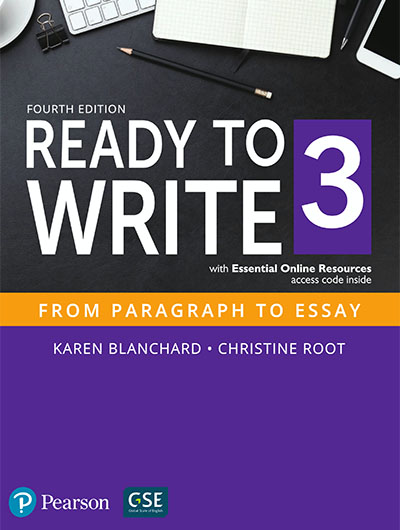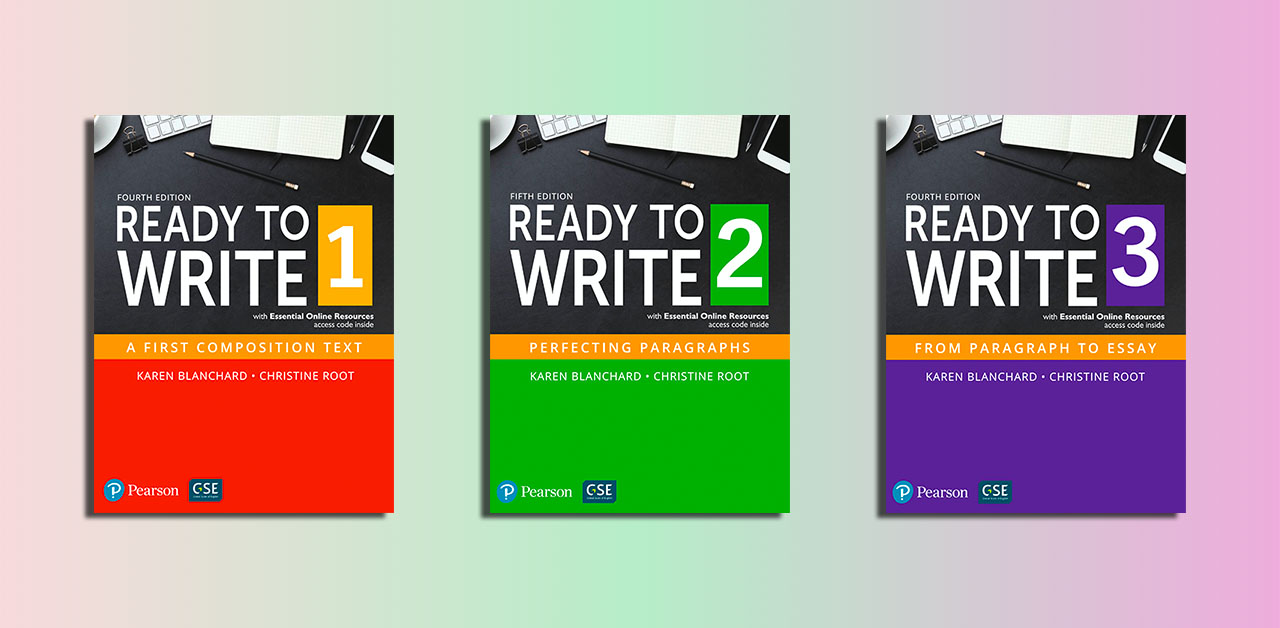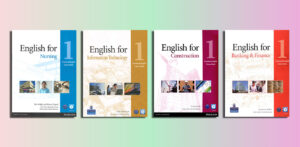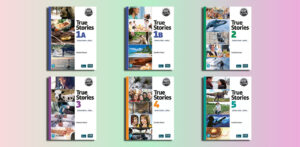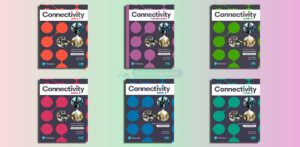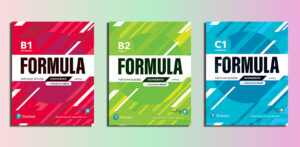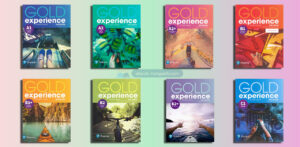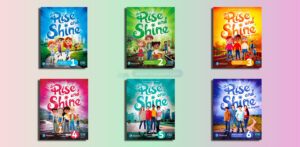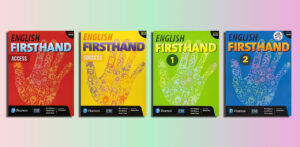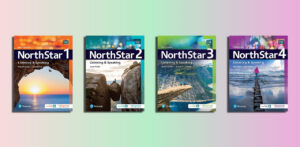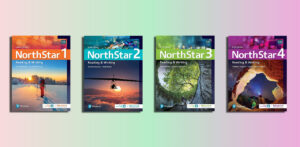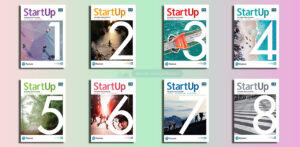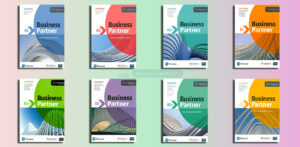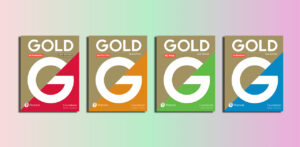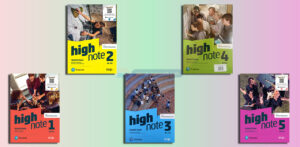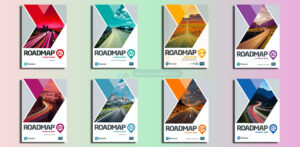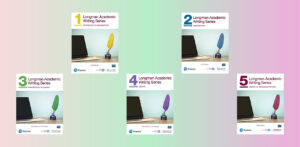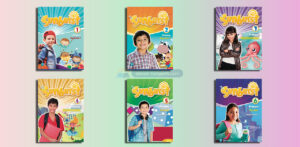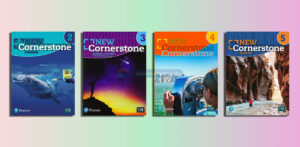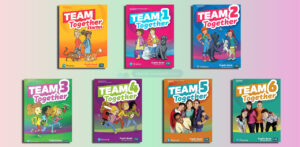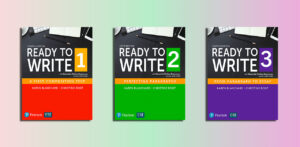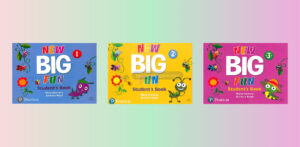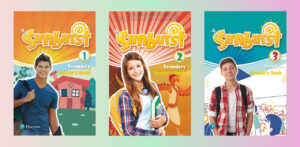Ready To Write
Level 1
Ready To Write 1 4e – A First Composition Text.pdf – Sample: Click
Ready To Write 1 4e Answer Key.pdf
Level 2
Ready To Write 2 5e – Perfecting Paragraphs.pdf – Sample: Click
Ready To Write 2 5e Answer Key.pdf
Level 3
Ready To Write 3 4e – From Paragraph to Essay.pdf – Sample: Click
Ready To Write 3 4e Answer Key.pdf
| Image | Name | Price | Buy |
|---|---|---|---|
| Ready To Write - Level 1 | $5 | ||
| Ready To Write - Level 2 | $5 | ||
| Ready To Write - Level 3 | $5 | ||
| Ready To Write - All 3 Levels | $12 |
✅ Get Ready To Write (all files): $5 for one level; $12 for all 3 levels
๏ Other payment methods: Click here
Overview of the “Ready To Write”
Contents
- 1 Overview of the “Ready To Write”
- 2 Who is suitable for ‘Ready To Write’?
- 3 The benefits of ‘Ready To Write’
- 4 Effective teaching and learning strategies for ‘Ready To Write’
- 5 Elevate Your Writing: Discover ‘Ready to Write’ for Adult Learners
- 6 Top Writing Skills Development Series: Comprehensive Educational Resources to Enhance Academic and Professional Writing Capabilities
| ✅ Coursebook: | Ready To Write |
| ✅ Publisher: | Pearson |
| ✅ Level: | A2, B2 |
| ✅ English type: | American English |
| ✅ For: | Adult |
| ✅ Skill: | Writing |
| ✅ Publication year: | 2017 |
“Ready to Write” by Pearson is an educational resource designed to improve writing skills for adult learners of American English across three levels, corresponding to the Global Scale of English (GSE) from 30 to 72 and the Common European Framework of Reference (CEFR) from A2 to B2. This course aims to unlock learners’ writing potential and boost their confidence through a variety of guided writing instructions, strategies, and activities suitable for both personal and academic contexts.
Key Features of “Ready to Write”
- Guided Writing Instruction: The course offers step-by-step guidance in the writing process, from prewriting through revising and editing, tailored to adult learners.
- Diverse Writing Activities: Activities range from personal writing forms such as emails, journals, and letters to more formal academic writing like essays, lab reports, and college applications, ensuring learners are well-prepared for any writing task.
- Comprehensive Support Materials: Examples, model paragraphs, and additional practice activities focus on essential writing skills, including organizing ideas, using proper punctuation, and understanding paragraph structure.
- Engagement and Motivation: With a variety of new and engaging activities, “Ready to Write” keeps learners motivated and focused on improving their writing skills.
- User-friendly Coursebooks: The materials are designed to be easy to use for both educators and learners, featuring clear frameworks and instructions that simplify the teaching and learning process.
- Connected English Learning Program: This course is part of a larger suite of educational resources that include assessment tools (Benchmark Test) and certification (Pearson English International Certificate), offering a comprehensive learning and development path for English language proficiency.
Why Choose “Ready to Write”?
- Diverse and Engaging Activities: Keeps learners interested and engaged with varied writing tasks.
- Ease of Use: The course materials are designed to be straightforward and accessible for both instructors and students.
- Structured Learning Path: Provides clear frameworks that help learners effectively navigate through different types of writing, enhancing both personal and academic writing skills.
Connected Learning Program
- “Ready to Write” is integrated within Pearson’s Connected English Learning Program, designed to facilitate learners’ progress through teaching, assessment, and certification. This integration ensures a holistic approach to language learning, emphasizing real-life communication skills necessary for personal advancement and academic success.
In summary, “Ready to Write” offers a comprehensive and engaging approach to developing writing skills, making it an ideal choice for adult learners looking to enhance their writing capabilities for both personal and professional growth.
Ready to Write Level 1
Who is suitable for ‘Ready To Write’?
“Ready to Write” by Pearson is particularly suitable for a diverse group of learners, primarily adult learners of American English who seek to improve their writing skills for various purposes. Here’s a breakdown of who would benefit most from this course:
Adult Learners
- Beginners to Intermediate Level: Specifically designed for those at A2 to B2 levels on the CEFR scale, or 30 to 72 on the GSE scale, making it ideal for learners from beginner to intermediate proficiency in English writing.
- English Language Learners: Adults learning American English as a second language who wish to improve their writing for personal, academic, or professional reasons.
Educational and Professional Contexts
- Students Preparing for Higher Education: The course covers personal to academic writing, including essays, lab reports, and college applications, making it suitable for those planning to attend college or university.
- Professionals Enhancing Communication Skills: For professionals looking to improve their written English for better workplace communication, including emails, reports, and presentations.
Teachers and Educators
- English Language Teachers: Educators looking for a comprehensive, easy-to-teach writing curriculum that provides clear frameworks and diverse activities to engage students.
- Tutors and Personal Coaches: Tutors working with adult learners or professionals who need personalized guidance to improve their writing skills.
Those Seeking Certification
- Individuals aiming to certify their English proficiency for academic or professional purposes can benefit from the course’s integration with Pearson’s assessment and certification paths, such as the Benchmark Test and the Pearson English International Certificate.
In summary, “Ready to Write” caters to a wide range of learners who are at different stages of their writing journey but share a common goal of improving their writing skills for personal growth, academic success, or professional advancement. Its structured approach, combined with a focus on real-life writing tasks, makes it a versatile choice for anyone looking to enhance their writing capabilities in American English.
Ready to Write Level 2
The benefits of ‘Ready To Write’
“Ready to Write” by Pearson offers a comprehensive suite of benefits tailored to meet the diverse needs of adult learners of American English. These benefits are designed to enhance writing skills across a spectrum of personal, academic, and professional contexts. Here’s an overview of the key advantages learners and educators can expect:
1. Improved Writing Confidence and Skills
- Comprehensive Writing Instruction: The course provides a step-by-step guide through the writing process, from prewriting to revising and editing, which builds foundational skills and confidence.
- Diverse Writing Formats: Learners gain experience in a variety of writing styles, from personal communications like emails and letters to academic texts such as essays and reports, enhancing versatility and adaptability.
2. Engaging and Motivational Learning Experience
- Varied Activities: The inclusion of diverse and engaging writing tasks maintains learner motivation and interest, making the learning experience enjoyable and effective.
- Clear and Achievable Goals: Through guided instruction and clear frameworks, learners can see their progress, boosting motivation and engagement.
3. Structured and Supportive Learning Environment
- User-friendly Materials: Both educators and learners benefit from easy-to-navigate coursebooks that simplify the teaching and learning process.
- Model Examples and Practice Activities: These resources help learners understand writing structures and techniques, offering additional support for grammar, punctuation, and paragraph construction.
4. Academic and Professional Preparedness
- Transition from Personal to Academic Writing: The curriculum is designed to guide learners from writing personal correspondence to crafting formal academic texts, preparing them for higher education and professional environments.
- Real-life Application: Writing tasks are aligned with real-world needs, ensuring that learners are equipped with the skills necessary for effective communication in various settings.
5. Integrated Learning Program
- Connected English Learning Program: “Ready to Write” is part of a holistic learning program that includes assessment (Benchmark Test) and certification (Pearson English International Certificate), providing a clear path for learning progression and certification of English language proficiency.
6. Global and Cultural Competence
- Exposure to American English: Learners become familiar with the nuances of American English, enhancing their ability to communicate effectively in diverse international contexts.
7. Flexibility for Teachers and Learners
- Adaptable Resources: The course materials are suitable for a range of learning environments, from classroom settings to self-study, allowing flexibility in how and where learning takes place.
“Ready to Write” stands out as a resource that not only aims to improve writing skills but also to foster a deeper understanding of the writing process and its applications in real life. Its comprehensive approach ensures that learners are well-equipped to tackle various writing challenges, paving the way for success in academic endeavors, professional communications, and personal expression.
Ready to Write Level 3
Effective teaching and learning strategies for ‘Ready To Write’
Implementing effective teaching and learning strategies can significantly enhance the effectiveness of the “Ready to Write” program by Pearson, ensuring that learners not only engage with the material but also apply their new skills in practical contexts. Here are several strategies designed to optimize the learning experience for both instructors and students:
1. Scaffolded Learning
- Start with the Basics: Begin with fundamental concepts of writing, such as sentence structure, grammar, and punctuation, before progressing to more complex tasks like paragraph writing and essay composition.
- Incremental Progression: Gradually increase the complexity of writing tasks, ensuring that students build confidence as they master each level before moving on to more challenging assignments.
2. Collaborative Learning
- Peer Review: Encourage students to share their writings with peers for feedback. This not only helps in developing critical thinking skills but also allows learners to view their work from different perspectives.
- Group Projects: Assign collaborative writing tasks where learners work together to produce a document, fostering teamwork and exposing them to different writing styles and approaches.
3. Real-world Applications
- Incorporate Authentic Materials: Use real-life examples of writing, such as newspaper articles, blogs, and professional emails, to show how writing skills are applied outside the classroom.
- Writing for a Purpose: Assign projects that serve a real-world purpose, like writing a letter to a local newspaper, creating a blog post on a topic of interest, or drafting a professional email.
4. Interactive and Digital Resources
- Online Platforms and Tools: Utilize digital resources and writing tools to engage learners. This includes grammar and spell checkers, online dictionaries, and platforms for document sharing and collaboration.
- Multimedia Presentations: Incorporate videos, podcasts, and webinars that discuss writing strategies and techniques, providing a varied learning experience that caters to different learning styles.
5. Continuous Feedback and Assessment
- Formative Assessment: Provide regular, constructive feedback on writing assignments, focusing on strengths and areas for improvement. This helps learners to iterate on their work and understand their progress.
- Portfolio Creation: Encourage students to compile a portfolio of their writings throughout the course. This not only demonstrates improvement over time but also allows for reflection on their learning journey.
6. Personalization and Choice
- Writing Prompts: Offer a variety of prompts for assignments, allowing learners to choose topics that interest them. This increases motivation and engagement by making the writing process more relevant to their lives.
- Individual Learning Paths: Recognize that learners have different strengths and weaknesses. Tailor instruction and support to meet individual needs, allowing for differentiated learning paths within the course framework.
7. Reflective Practice
- Reflection Sessions: Allocate time for students to reflect on their writing experiences, challenges, and learning outcomes. This can be facilitated through journals, class discussions, or reflective essays.
- Self-Assessment: Teach learners how to assess their own work critically. This empowers them to become more autonomous writers who can evaluate and improve their writing independently.
By integrating these strategies into the “Ready to Write” curriculum, educators can create a dynamic and supportive learning environment that not only enhances writing skills but also fosters a deeper appreciation for the craft of writing. These approaches ensure that learners are equipped with the tools they need to communicate effectively and confidently in any context.
Elevate Your Writing: Discover ‘Ready to Write’ for Adult Learners
In an era where communication skills are paramount, the ability to articulate thoughts clearly and compellingly in writing is invaluable. For adult learners seeking to enhance their writing prowess, Pearson’s “Ready to Write” emerges as a beacon of guidance, offering a structured path to elevate writing skills. This article delves into how “Ready to Write” is specifically designed to cater to adult learners, unlocking their potential to communicate more effectively in English.
Bridging the Gap in Adult Education
Adult learners come with diverse needs, backgrounds, and experiences. “Ready to Write” acknowledges this diversity by offering a curriculum tailored to adults who wish to improve their writing for personal growth, academic success, or professional advancement. The course is built on the premise that mastering writing is not just about learning grammar and vocabulary; it’s about expressing ideas, persuading audiences, and engaging in meaningful communication.
A Curriculum That Understands You
“Ready to Write” spans three levels, covering a Global Scale of English (GSE) range from 30 to 72 and corresponding to CEFR levels A2 to B2. This range ensures that whether you’re just beginning to craft sentences or looking to polish your essay-writing skills, there’s content specifically designed for your level of proficiency.
The course is structured around the principle that writing can be learned through guided practice, constructive feedback, and continuous refinement. It integrates activities ranging from personal writing tasks like emails and journals to more formal academic writing, such as essays and lab reports. This variety ensures learners can apply their skills in real-world situations, making the learning experience both relevant and practical.
Key Features of “Ready to Write”
- Guided Instruction: Step-by-step approaches to writing that help learners at every stage, from brainstorming to final edits.
- Diverse Writing Activities: Engaging tasks that cater to both personal and academic needs, ensuring learners are well-equipped to tackle any writing challenge.
- Practical Writing Frameworks: Clear, easy-to-follow structures that demystify the writing process, making it accessible to all.
- Enhanced Grammar and Style: Focused activities to refine grammar, punctuation, and style, enhancing the clarity and impact of your writing.
Beyond the Basics: A Path to Confidence and Success
“Ready to Write” goes beyond traditional writing instruction by embedding confidence-building practices into its curriculum. Learners are encouraged to reflect on their progress, celebrate their achievements, and identify areas for improvement. This reflective practice fosters a growth mindset, crucial for adult learners who may be returning to education after a hiatus or balancing their studies with professional and personal responsibilities.
Integrated Learning Experience
Recognizing the importance of a holistic approach to language learning, “Ready to Write” is part of Pearson’s Connected English Learning Program. This integration means learners can supplement their writing practice with assessment tools like the Benchmark Test and gain certification through the Pearson English International Certificate. Such a comprehensive learning pathway not only elevates writing skills but also opens doors to new opportunities in education and employment.
Conclusion
For adult learners aiming to elevate their writing, “Ready to Write” offers a unique blend of structured guidance, practical application, and motivational support. By embracing this course, learners can transform their writing from a task to be dreaded into a powerful tool for communication, capable of unlocking personal and professional opportunities. Discover “Ready to Write” today, and take the first step towards becoming a confident, proficient writer ready to make your mark on the world.
Top Writing Skills Development Series: Comprehensive Educational Resources to Enhance Academic and Professional Writing Capabilities
For learners seeking alternatives to the “Ready to Write” series by Pearson, which is well-known for helping students develop their writing skills from basic sentence construction to full essay composition, several other educational series offer similar pathways to enhance writing proficiency. These alternatives focus on a structured approach to writing, ensuring learners can express themselves effectively in various formats. Here are notable series that provide structured instruction, engaging content, and skill development:
- “Longman Academic Writing Series” by Pearson Education: This series guides students through different stages of writing, from basic sentences to complex research papers, systematically developing skills for academic success.
- “Writing to Communicate” by Cynthia A. Boardman (Pearson Education): Helps students develop writing skills by guiding them through the process of composing clear, well-organized paragraphs and essays.
- “Writer’s Resources” by Cengage Learning: From paragraph to essay, this series provides students with essential tools to develop writing clarity and grammatical accuracy.
- “Effective Academic Writing” by Oxford University Press: An integrated skills course that teaches students to compose academic essays and research papers step-by-step.
- “Steps to Writing Well” by Jean Wyrick (Cengage Learning): A comprehensive guide that covers various types of writing tasks from drafts to final revisions, focusing on the mechanics of writing and composition skills.
- “Great Writing” by National Geographic Learning: Combines clear, practical writing strategies with guided practice to help students write effective sentences, paragraphs, and essays.
- “Grammar for Writing” by Sadlier: A unique series that improves writing skills by teaching how to use grammar effectively in context, rather than in isolation, which helps enhance both writing and grammatical skills.
- “Academic Writing Skills” by Cambridge University Press: A three-volume series that develops detailed writing skills and strategies through practical classroom exercises and guided essay-writing practice.
- “Express Yourself” by Oxford University Press: Focuses on developing writing skills through thematic units that encourage expression in various written forms, from emails to essays.
- “College Writing” by Macmillan Education: Helps students prepare for college-level writing through process-oriented writing instruction, integrating reading and writing tasks to build critical thinking and writing skills.
- “Write Ahead” by Cambridge University Press: Combines skill development in writing with critical thinking exercises, helping students to produce coherent and polished texts appropriate for academic and professional contexts.
- “Fundamentals of Academic Writing” by Pearson Education: A lower-level composition series that introduces college-level writing, teaching basic composition skills to prepare students for more advanced academic tasks.
- “New Directions: Reading, Writing, and Critical Thinking” by Cambridge University Press: Engages students with challenging themes and readings to enhance both their writing and critical thinking abilities.
- “Paragraph Writing” by Dorothy Zemach (Macmillan Education): Focuses specifically on constructing well-developed paragraphs, crucial for effective essay writing, through structured models and plentiful practice.
- “English for Writing Research Papers” by Springer: Tailored for non-native English speakers who are writing research papers for publication in English, focusing on style, grammar, and organization.
- “Academic Encounters: Life in Society” by Cambridge University Press: Focuses on reading and writing in the context of real-world subjects related to sociology, enhancing students’ ability to write essays and research reports in a scholarly manner.
These alternatives offer robust preparation for learners aiming to improve their writing proficiency across a range of contexts. Whether through detailed grammatical instruction, progressive writing tasks, or comprehensive practice exercises, these resources equip students with the skills needed to write confidently and effectively.




